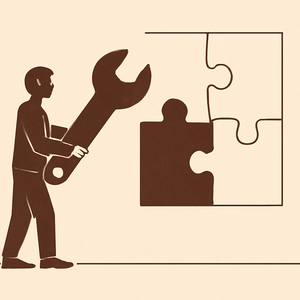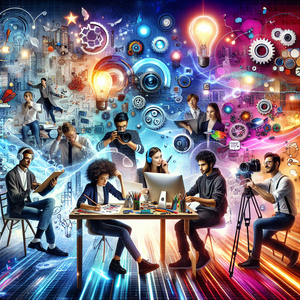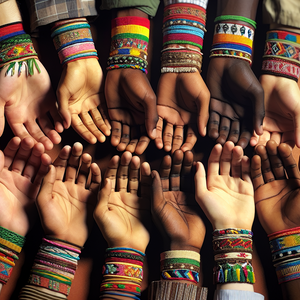The Art of Science: How Creative Thinking Drives Innovation in STEM

At first glance, art and science may seem like polar opposites. Art is often perceived as subjective, emotional, and fluid, while science is typically viewed as objective, logical, and structured. Yet, as many innovators have discovered, the two realms are not mutually exclusive. In fact, they can inform and enhance each other. By fostering a culture of creativity within STEM fields, professionals can develop more effective solutions to complex problems. For instance, engineers and designers at IDEO, a global design and consulting firm, have revolutionized product development by utilizing design thinking—a methodology that combines empathy, creativity, and experimentation. By understanding the needs and experiences of users, engineers can create products that are not only functional but also aesthetically pleasing and user-friendly. This approach has led to groundbreaking innovations, such as the Palm V electronic device, known for its sleek design and ergonomic functionality. Such examples highlight the potential of design-led thinking to bridge the gap between technical functionality and human experience.
Real-World Examples of Creative Innovation
Several notable examples underscore the value of creative thinking in STEM. One prominent case is that of Dr. Neri Oxman, an architect and designer at MIT Media Lab. Oxman's work integrates digital fabrication, biology, and materials science, leading to projects like "Wanderers," a series of 3D-printed structures inspired by natural forms. By merging artistic concepts with scientific principles, Oxman's projects challenge traditional boundaries and create sustainable, innovative designs. Her work exemplifies how interdisciplinary approaches can redefine the way we interact with technology and the environment. Another example is found in the realm of biotechnology, where companies like Ginkgo Bioworks are harnessing the power of design in synthetic biology. By applying principles of design and creativity, Ginkgo is able to engineer microorganisms for various applications, from sustainable agriculture to pharmaceuticals. Their emphasis on aesthetics and user experience in biodesign is paving the way for new industries and solutions that prioritize both functionality and beauty. This illustrates that the intersection of biology and design not only results in viable products but also enhances user engagement and environmental sustainability.
The Benefits of Blending Disciplines
The integration of art and science not only fuels innovation but also fosters a more inclusive and diverse approach to problem-solving. When individuals from different backgrounds collaborate, they bring unique perspectives and skills to the table. This diversity enhances creativity and can lead to unexpected breakthroughs. For example, interdisciplinary teams often approach challenges with a broader range of solutions, resulting in more comprehensive and effective outcomes. Moreover, blending artistic approaches into STEM education prepares students for an increasingly interdisciplinary workforce. Programs that emphasize creativity, collaboration, and critical thinking equip students with the skills necessary to navigate complex challenges and drive innovation. Schools that embrace project-based learning, where students tackle real-world problems through collaborative efforts, are cultivating the next generation of thinkers who are both scientifically and artistically inclined. This preparation is critical in a world where the lines between disciplines are increasingly blurred and where creative problem-solving is essential for success.
The fusion of creativity and scientific inquiry is not merely a trend; it is a necessity in today’s rapidly evolving world. As demonstrated by the examples of innovators like Dr. Neri Oxman and companies like IDEO and Ginkgo Bioworks, integrating artistic thinking into STEM fields can lead to meaningful advancements that address complex issues. By valuing creativity alongside technical expertise, we open the door to a future where innovation thrives at the intersection of art and science. As we continue to face unprecedented challenges, embracing this synergy will be crucial for developing solutions that are not only effective but also resonate on a human level. In conclusion, fostering a culture that embraces both creativity and scientific rigor will not only enhance innovation but also enrich the human experience, laying the groundwork for a more sustainable and interconnected future.
User Experience (UX) Designer
Google, Apple, startups in the Silicon Valley ecosystem
Job Description
Collaborate with engineers and product teams to develop user-centered design solutions for software and hardware products.
Conduct user research, usability testing, and analyze user feedback to inform design decisions.
Proficient in design tools such as Sketch, Figma, or Adobe XD and a strong understanding of human-computer interaction principles.
Biodesign Engineer
Ginkgo Bioworks, other biotech firms
Job Description
Engineer microorganisms for applications in sustainable agriculture, pharmaceuticals, and environmental solutions, with a focus on the aesthetic and functional aspects of biological design.
Work collaboratively with biologists and designers to prototype and test biotechnological applications.
Requires knowledge in synthetic biology, genetic engineering, and experience with design thinking methodologies.
Product Development Engineer
Samsung, Sony, various startups
Job Description
Lead cross-functional teams in the creation of innovative products by integrating engineering principles with design thinking.
Responsible for prototyping, testing, and iterating designs based on user feedback and market needs.
Must possess a strong background in engineering (Mechanical, Electrical, or Industrial) and experience with CAD software.
Creative Technologist
creative agencies, media companies, tech startups
Job Description
Bridge the gap between art and technology by developing interactive installations, applications, or experiences that engage users on multiple sensory levels.
Utilize programming languages (like JavaScript or Python) and creative tools (such as Unity or Processing) to bring concepts to life.
A background in both art and computer science is essential, along with skills in prototyping and user experience design.
Interdisciplinary STEM Educator
educational institutions, non-profits focused on STEM outreach, innovative schools
Job Description
Design and implement curriculum that integrates art and science, fostering creativity and critical thinking in students.
Facilitate project-based learning experiences that encourage collaboration among students from diverse academic backgrounds.
Requires teaching certification, experience in STEM education, and a passion for innovative teaching methods.


